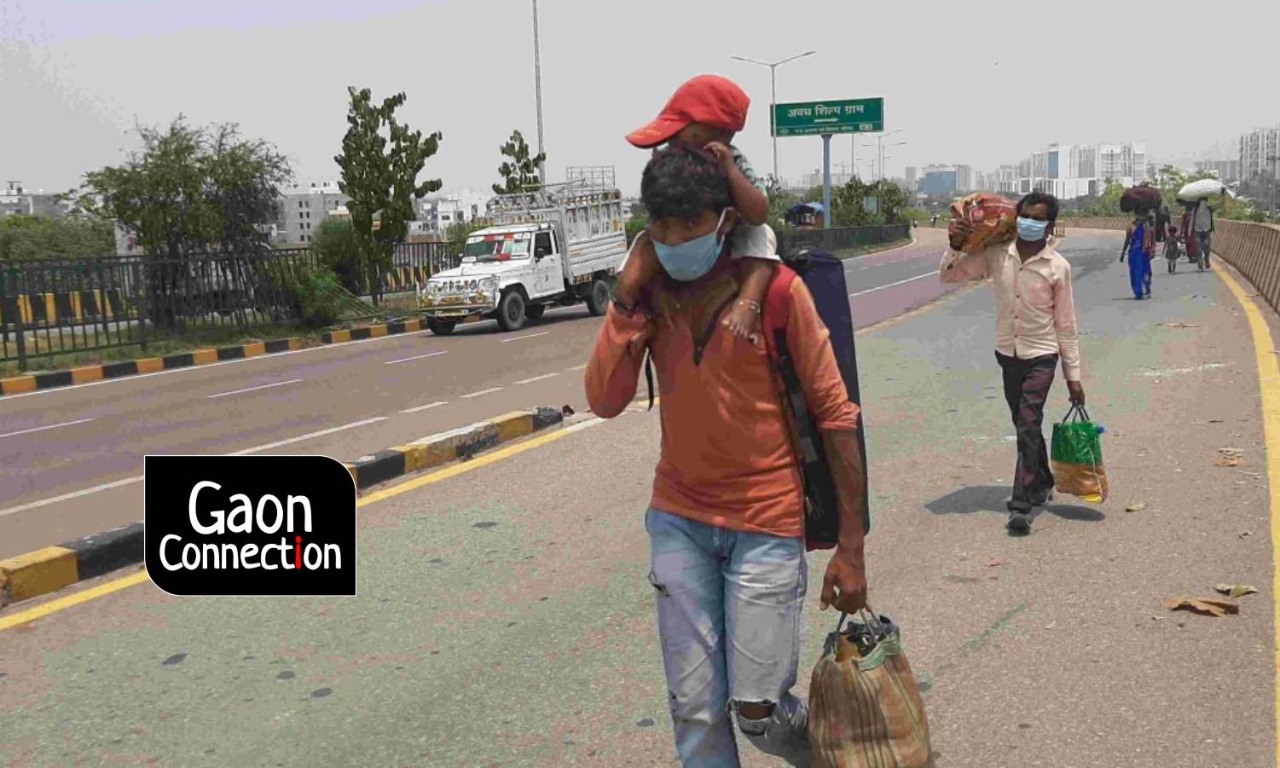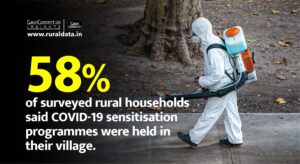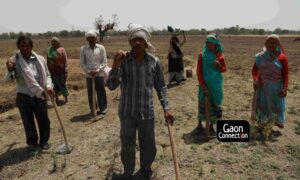In April, amid the nationwide lockdown in view of the COVID-19, a 12-year-old girl, Jeeta Madkami, daughter of migrant labourers who worked in chilli fields, died after walking nearly 150 kilometres (km) from Telangana to reach her native Bijapur district in Chhattisgarh. She, along with her parents, was on her way to their village.
Similarly, 39-year-old Ranvir Singh, collapsed and died after walking 200-km from Delhi, where he used to work as a migrant worker, to reach his village in Morena district of Madhya Pradesh.
In the last three to four months, India has witnessed a unique, but extremely painful reverse migration where hundreds of thousands migrant workers suffered innumerable hardships to get back to their village homes as they lost their livelihoods in the longest ever lockdown in the country.
In a first-of-its-kind national survey to document the impact of COVID-19 lockdown on rural India, Gaon Connection interviewed 25,371 rural residents, including migrant workers, across 23 states.
The survey shows 23 per cent migrant workers returned home walking during the lockdown, 18 per cent by bus, and 12 per cent of them by train. Because of the nationwide lockdown, all transport modes were shut down forcing people, including pregnant women and young kids, to walk hundreds of kilometres.
The Gaon Connection survey also found a major reason for rural people to migrate to cities is in search of employment. For instance, three-fifth respondents said the reason for villagers to migrate to cities is lack of job opportunities in villages.
While on their way home from the cities, 12 per cent migrant workers were reportedly beaten by the police. About 40 per cent of this workforce faced food scarcity during its journey back home, found the national survey.
Interestingly, majority of the migrant workers (36 per cent) claimed they returned to the villages due to the fear of contracting the coronavirus, and 29 per cent said they returned since they had no money to survive in the cities.
This painful journey of reverse migration resulted in a loss of several lives. According to thejeshn.com, a public database of lockdown-resulted deaths, 209 migrant workers lost their lives due to exhaustion and starvation as a result of continuous walking during the lockdown.
With her one-year-old child, 30-year-old Parvati Devi, braving 45 degree Celsius heat, set out on foot to reach her home in Chhattisgarh, 700 km from Lucknow in Uttar Pradesh. “It is no pleasure for us to walk with a young child in this sun. We vacated the rented room we were living in and are on our way home to our village,” she told Gaon Connection.
According to the International Labour Organization (ILO), “migrant worker” is defined as a person who migrates from one country to another to be employed other than on his account. But, there is a huge population that moves internally within the country mostly in search of earning a living. And, this rural-urban migration has witnessed an increasing trend in India.
There is one law – Inter-State Migrant Workmen (Regulation of Employment and Conditions of Service) Act, 1979 – which covers the migrant workers population in the country. This 1979 Act defines ‘inter-state migrant workman’ as “… any person who is recruited by or through a contractor in one State under an agreement or other arrangement for employment in an establishment in another State”.
The main aim of this law is to have a formal record of migrant workers across the country and ensure accountability from the establishments and contractors who hire them. However, as it got reflected during the lockdown, this law has not been implemented as there is no credible official record of migrant workers in the country. Various government agencies have put forth different estimates.
For instance, during the lockdown, the Chief Labour Commissioner said 2.6 million migrant workers were stranded across the country. But, the Solicitor General informed the Supreme Court of India that 9.7 million migrant workers had been transported back home.
Meanwhile, conservative estimates by research scholars put the number of migrant works affected by the lockdown to be anywhere between 20 million and 22 million.
“There’s no exact figure as there’s no formalisation of migrant workers. This is a part of a bigger master plan played by the free market policies which always restrict migrant workers to be formalised and do not allow them access to social security and entitlement. This has been the attitude of both the State and the market forces towards the migrant workers,” Chandan Kumar, a labour rights activist told Gaon Connection. He is also the national coordinator of the Working People’s Charter, a coalition of over 150 workers collectives organising informal workers across India.
While stranded in the cities, migrant workers and their families had to skip meals due to lack of money and faced hunger. For instance, the Gaon Connection survey found 36 per cent migrant worker respondents had to skip an entire day’s meal when stranded in the cities during the lockdown. Over 40 per cent reportedly had to skip one meal a day, as they did not have money to arrange for food.
Those who earned less than Rs 5,000 a month in the city were far more likely to have often gone hungry, found the national rural survey.
One of the reasons for so many migrants having skipped a meal or gone hungry while in the city is the irregular supply of ration or food from the government or the local administration in the city. Only around two in every five said that they received ration or cooked food from the administration either daily or sometimes. Nearly half reported never or very rarely having received food or food grains from authorities.
In spite of facing acute hardships, Gaon Connection survey found 33 per cent migrant workers wanted to return to the cities to work. Of the total migrant worker respondents of the survey, 67 per cent earned up to Rs 10,000 per month by working in the cities.
Interestingly, only about 25 per cent migrant workers said the attitude of the Narendra Modi-led NDA government towards the migrant workers during the lockdown was ‘bad’ or ‘very bad’. More than half the migrant workers said the Modi government cared both for the cities and villages.
According to Kumar, there is a need to strictly implement the existing Inter-State Migrant Workmen Act, 1979, which talks about basic travel allowance, housing, minimum wages, entitlements to these workers. “Most of these migrant workers are Adivasi and Dalit people, who are marginalised section of the society and are not organised as trade unions. There is a need is to register them under the state welfare social security scheme and give them powers like other local workers,” he added.



















